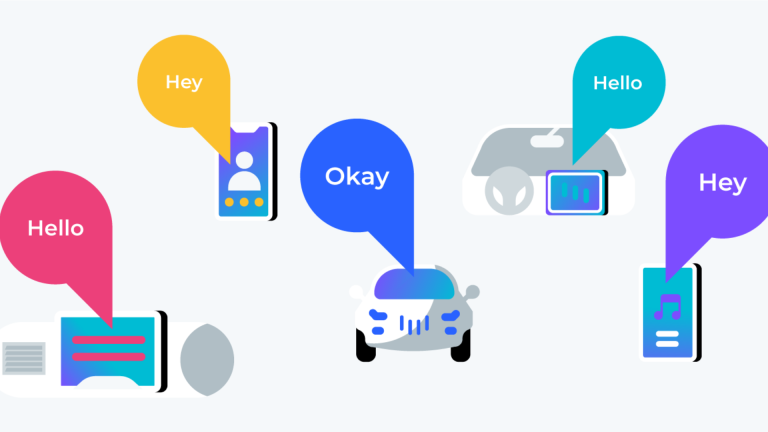Preserving the proprietary nature of your product’s technology and operational information through a brand-owned voice assistant reduces the risk of unwanted competition. Product updates and voice experience improvements are easier and can be made independent of third-party interference. The voice experience can be designed based on extensive user data to include the geography, languages, accents, specific terms, and the lexicon of your users.
If you’ve chosen a multi-assistant strategy that doesn’t include a custom voice assistant, the challenges of product functionality and updates are multiplied—requiring considerable coordination between organizations and creating a drain on people and resources.
Custom commands and speciality domains help improve the speed and accuracy of brand-owned voice assistants, while delivering experiences tailored to the customer’s unique wants and needs. Partnering with a voice AI platform provider that extends the value of your product or service with an extensive library of domains eliminates the need for a third-party assistant in most instances.
However, having Alexa or Google onboard can be another selling point for your brand and a way to make your customers feel more comfortable using a voice interface. If you’ve decided on a multi-assistant strategy, it’s important to ensure a third-party voice assistant supplements your customer experience without supplanting it.
Give customers a choice
According to 83% of business leaders surveyed by Opus Research, providing a better customer experience is the top benefit of a voice-enabled product or service. A majority also indicated that they hope to provide consistent customer experiences across product lines in the future. Achieving these goals hinges on having control over the voice experience and the power to decide where it will reside, how it will sound, and what its functionality will be.
However, a better customer experience may also mean the need to give users the option to make a purchase on Amazon via their Alexa account or invoking Google Nest to check on home security. The key takeaway here is that implementing a voice assistant that provides the convenience of familiar assistants or owning your customer relationships, valuable data, and voice experiences doesn’t have to be a choice—businesses can deliver both.
Establishing a custom voice assistant opens the door to the omnichannel experiences that 62% of business leaders have already included in their voice strategy roadmaps. The common goal of consistent experiences across channels isn’t likely to be realized without brand-owned voice assistants.









